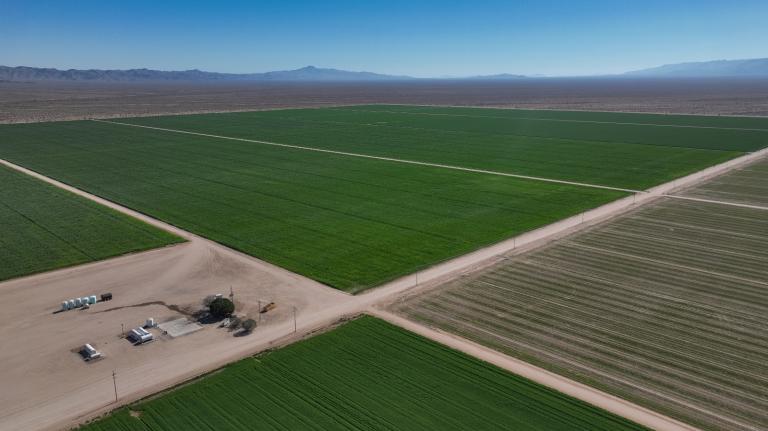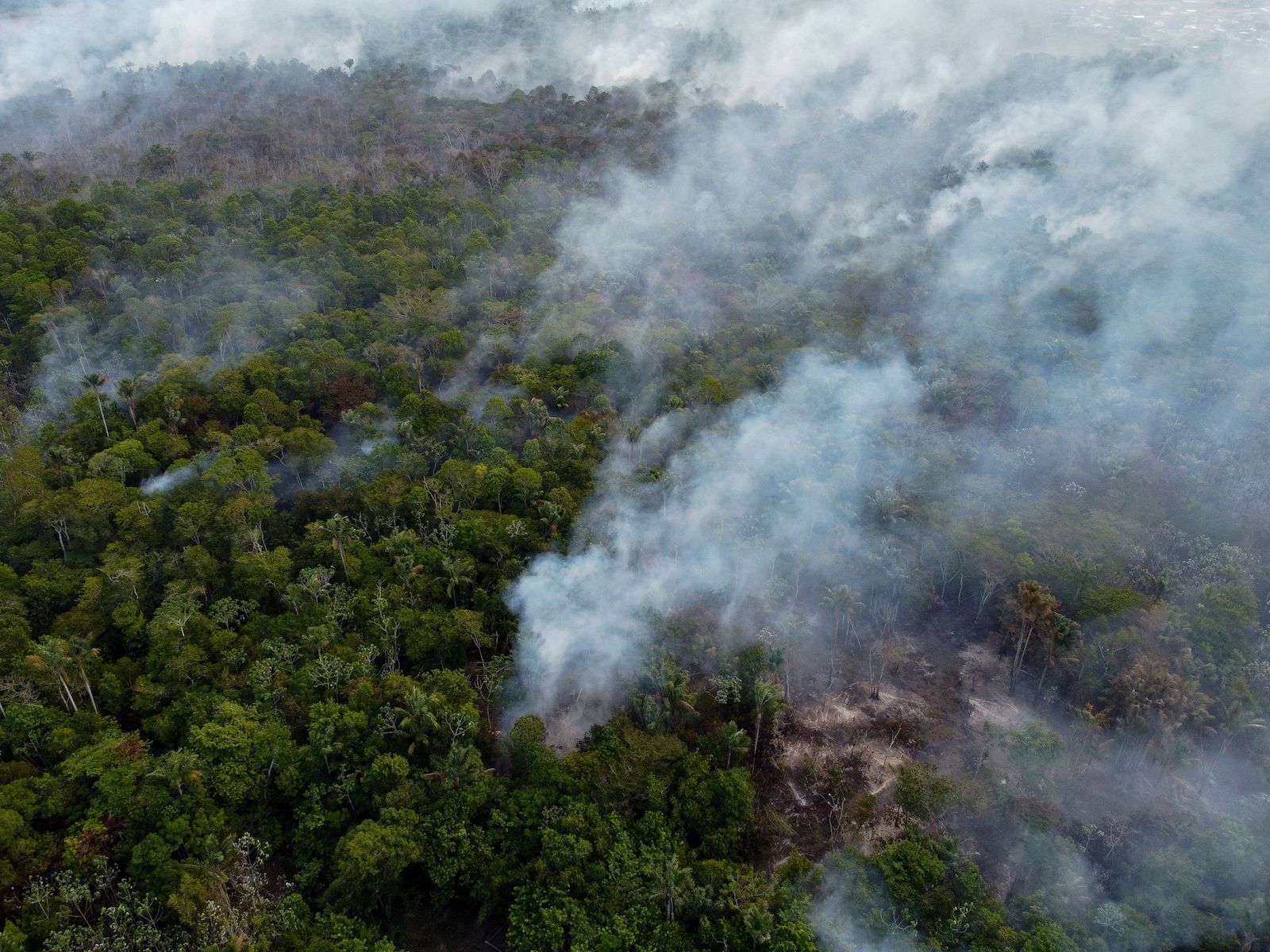A record-breaking number of wildfires are blanketing the Amazon with smoke, choking some Brazilian cities and further isolating many Indigenous villages. Over 2,700 wildfires have been reported in the region in the first 11 days of the month — the highest number for any October since 1998, when the record-keeping began.
Air quality became so poor last week in places like Manaus that officials had to postpone the city’s annual marathon, and major universities canceled classes. Philip Fearnside, research professor at the National Institute for Research in Amazonia, said hospitals in the city are full of people who are having respiratory issues. “That should be a wake up call to actually change government policies and individual behavior to actually contain global warming,” he said.
Part of the issue is that the Amazon is in the middle of a severe drought. Water levels in the region’s major rivers have become so low as to be unnavigable, leaving many Indigenous river communities without any way to obtain certain foods, drinking water, or medicine, according to Reuters. Commercial shipping has also been impacted as vessels from the Denmark headquartered company Maersk suspended service in Manaus, after a barge ran aground on the Negro River last month.
“It’s a very worrisome situation,” said Marcia Macedo, an associate scientist at the Woodwell Climate Research Center. “We’ve seen large fish kills [an event in which numerous dead fish are suddenly observed in a body of water], water levels dropping way faster than normal — lake levels, river levels, like, six meters below what would be expected at this time of year — and definitely the potential for it to get a whole lot worse before it gets better.”
On Wednesday, Indigenous tribes in the region called for the Brazilian government to take more formal action. “We ask the government to declare a climate emergency to urgently address the vulnerability Indigenous peoples are exposed to,” read a statement from the Indigenous umbrella group APIAM, which represents over 60 Amazonian tribes.
As of Friday, almost all of the 62 cities in the state of Amazonas, which includes Manaus, had declared a state of emergency.
Brazilian President Luiz Inácio Lula da Silva campaigned on protecting the Amazon from deforestation and further destruction in sharp contrast to his predecessor, Jair Bolsonaro. But while Lula’s administration has upheld Indigenous rights by restoring land in the rainforest and the Brazilian Supreme Court struck down a challenge to Indigenous land rights last month, deforestation remains a major concern.
Tree loss is not the only factor contributing to the current crisis. Climate change as well as El Niño, a weather phenomenon that results in a mass of warm water traveling east over the Pacific and crashing into South America, are also driving dry conditions. “Deforestation contributes to global warming, although fossil fuels globally are the main cause,” said Fearnside. “But global warming is changing climate all over the world, including here in the Amazon.”
El Niño, climate change, and extreme heat
Macedo warns that if the cycles that maintain the Amazon rainforests’ trademark wet, rainy, cloudy conditions start to dissipate, the forest could be permanently altered.
“If you get beyond a certain amount of deforestation, you start to affect that recycling of rainwater back to the atmosphere that helps to kind of cool the land surface and also seed new rain clouds,” she told Grist. “If fires get out of control, then you have less forest cover and these droughts are even more intense, and so on and so forth.”
While the system is fairly well understood, Macedo says it’s difficult to pin down at what point things will stop working as usual.
“It’s not linear. It’s not it’s not a simple process to kind of pin down,” Macedo said.




